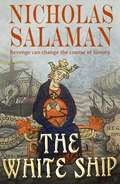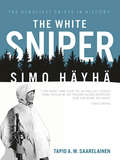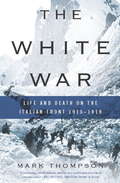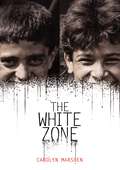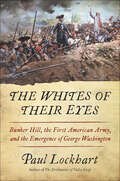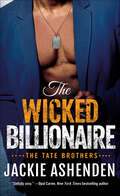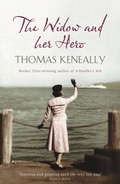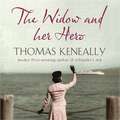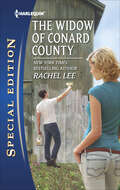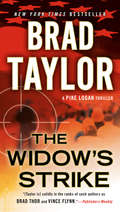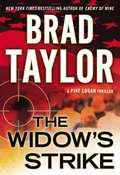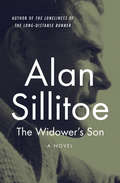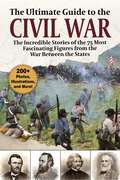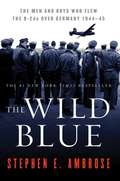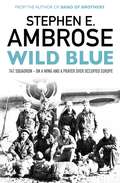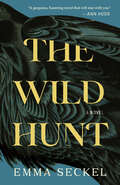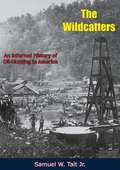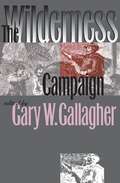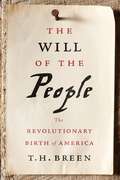- Table View
- List View
The White Ship: a true and dramatic tragedy that changed the course of history
by Nicholas Salaman'The most calamitous event ever to afflict the royal family of England.''Riveting' THE TIMESThe White Ship sank in the English Channel on 25 November 1120, with other one survivor. On the 900th anniversary of the tragedy, this tale of anarchy, passion and revenge brings the past vividly to life. For fans of Ken Follett, Robert Harris and Antonia Fraser. ---REVENGE CAN CHANGE THE COURSE OF HISTORY.Normandy, 1119. A hotbed of malcontent barons is kept in fragile order by their duke - Henry I, King of England. Fresh from early years in a monastery, Bertold, the bastard son of one of these barons, meets Juliana, a countess and daughter of the King. He falls in love - or lust - but sees that his chance could come with work in her small court. Soon, he finds himself caught up in a ruthless feud between Juliana and her father. And when Juliana's daughters are offered as hostages for a strategic castle, even love may not be enough to allay a tragedy that will change everything. Reader praise for THE WHITE SHIP'The period and characters are brought alive in a gripping tale''Wonderfully written and entirely captivating, this is an excellent historical novel''Told with humour combined with the drama and savagery of the time''I loved the history, I loved the characters - heroic and villainous'
The White Ship: a true and dramatic tragedy that changed the course of history
by Nicholas Salaman'The most calamitous event ever to afflict the royal family of England.''Riveting' THE TIMESThe White Ship sank in the English Channel on 25 November 1120, with other one survivor. On the 900th anniversary of the tragedy, this tale of anarchy, passion and revenge brings the past vividly to life. For fans of Ken Follett, Robert Harris and Antonia Fraser. ---REVENGE CAN CHANGE THE COURSE OF HISTORY.Normandy, 1119. A hotbed of malcontent barons is kept in fragile order by their duke - Henry I, King of England. Fresh from early years in a monastery, Bertold, the bastard son of one of these barons, meets Juliana, a countess and daughter of the King. He falls in love - or lust - but sees that his chance could come with work in her small court. Soon, he finds himself caught up in a ruthless feud between Juliana and her father. And when Juliana's daughters are offered as hostages for a strategic castle, even love may not be enough to allay a tragedy that will change everything. Reader praise for THE WHITE SHIP'The period and characters are brought alive in a gripping tale''Wonderfully written and entirely captivating, this is an excellent historical novel''Told with humour combined with the drama and savagery of the time''I loved the history, I loved the characters - heroic and villainous'
The White Sniper: Simo Häyhä
by Tapio SaarelainenThe army guide that taught WWII soldiers how to survive in the jungles and swamps of the tropics.During the Second World War, Allied soldiers fought to survive not only encounters with the enemy but the landscape they found themselves in. Being posted to Southeast Asia and the Pacific to fight the Japanese meant soldiers had to learn to survive in the tropics, fighting and living in endless steamy jungle and perilous swamps. In this alien environment, men had to be able to take care of themselves rather than relying on their unit to supply their needs, something that did not come naturally to the many soldiers born and raised in cities.To help them, the British and US armies produced a number of official training manuals and guides explaining how to identify and fight the Japanese and avoid their deadly punji traps, as well as “jungle lore”: How to find and cook plants that were safe to eat Which animals and insects could kill them How to identify and treat tropical illnesses and diseases How to avoid the dangers of polluted water and cannibalsThe Jungle Survival Manual brings together the official manuals and information that enabled the Allies to fight in Burma, Malaya, Thailand, Indochina, Singapore, and the Pacific Islands—and win the war.Includes diagrams and drawings reproduced from the original guides.
The White Tribe
by Robin MooreA fast-moving story of guerrilla warfare, deceit, and the betrayal of the Rhodesian government by its supposed friends.
The White War: Life and Death on the Italian Front 1915-1919
by Mark ThompsonIn May 1915, Italy declared war on the Habsburg Empire. Nearly 750,000 Italian troops were killed in savage, hopeless fighting on the stony hills north of Trieste and in the snows of the Dolomites. To maintain discipline, General Luigi Cadorna restored the Roman practice of decimation, executing random members of units that retreated or rebelled. With elegance and pathos, historian Mark Thompson relates the saga of the Italian front, the nationalist frenzy and political intrigues that preceded the conflict, and the towering personalities of the statesmen, generals, and writers drawn into the heart of the chaos. A work of epic scale, "The White War" does full justice to the brutal and heart-wrenching war that inspired HemingwayOCOs "A Farewell to Arms. "
The White Zone (Exceptional Reading And Language Arts Titles For Intermediate Grades Ser.)
by Carolyn MarsdenNouri and his cousin Talib can only vaguely remember a time before tanks rumbled over the streets of their Baghdad neighborhood—when books, not bombs, ruled Mutanabbi Street. War has been the backdrop of their young lives. And now Iraq isn't just at war with Americans. It's at war with itself. Sunnis fight Shiites, and the strife is at the boys' doorsteps. Nouri is Shiite and Talib is half Sunni. To the boys, it seems like only a miracle can mend the rift that is tearing a country and a family apart. In early 2008, Iraq experienced a miracle. Snow fell in Baghdad for the first time in living memory. As snow covered the dusty streets, the guns in the city grew silent and there was an unofficial ceasefire. During these magical minutes, Sunni and Shiite differences were forgotten. There was no green zone, no red zone. There was only the white zone. Against this real-life backdrop, Nouri and Talib begin to imagine a world after the war.
The Whites of Their Eyes: Bunker Hill, the First American Army, and the Emergence of George Washington
by Paul LockhartA reassessment of one of the most famous battles in U.S. history combining military and political history by the author of The Drillmaster of Valley Forge.One hot June afternoon in 1775, on the gentle slopes of a hill near Boston, Massachusetts, a small band of ordinary Americans—frightened but fiercely determined—dared to stand up to a superior British force. The clash would be immortalized as the Battle of Bunker Hill: the first real engagement of the American Revolution and one of the most famous battles in our history. But Bunker Hill was not the battle that we have been taught to believe it was.Revisiting old evidence and drawing on new research, historian Paul Lockhart shows that Bunker Hill was a clumsy engagement pitting one inexperienced army against another. Lockhart tells the rest of the story, too: how a mob of armed civilians became America’s first army; how George Washington set aside his comfortable patrician life to take command of the veterans of Bunker Hill; and how the forgotten heroes of 1775—though overshadowed by the more famous Founding Fathers—kept the notion of American liberty alive, and thus made independence possible.“[A] stimulating history. . . . Lockhart’s shrewd, well-judged interpretation corrects myths about the battle and the men who fought it while doing full justice to their achievement in creating an army—and a nation—out of chaos.” —Publishers Weekly (starred review)
The Wicked Billionaire: A Billionaire Seal Romance (The Tate Brothers #2)
by Jackie AshendenThis high-concept series brings together the glamour of Park Avenue and hot Navy SEALs in dark, smoldering contemporary romances.The Tate Brothers were once orphans and they have been raised to do one thing only: protect what is theirs.As a trained sniper and Navy SEAL, Lucas Tate found the courage to distance himself from the wealthy, wicked patriarch who adopted him. Instead, he’s devoted his life to the elite band of brothers from his unit. So when the widow of one of his former comrades finds herself in apparent danger, Lucas makes it his job to protect her against all enemies. . .and not let her out of his sights. Grace Riley feels overwhelmed by Lucas's presence, but the cold-eyed marksman will do anything to keep her safe. Soon the special attention he pays her becomes a wild romantic distraction—one that troubles Grace, since Lucas was so close to her deceased husband. Still, how can she resist Lucas’s intense, ice-blue stare? All she knows is that a life without strong, passionate Lucas is one not worth living. Can Lucas can find a way to honor his former brother-in-arms by saving Grace. . .and loving her, too?
The Widow and her Hero
by Thomas Keneally'Exceptionally good...a master storyteller' Allan Massie, Scotsman'Both an absorbing wartime thriller and a thoroughly convincing study of grief' Sunday TimesIn 1943, when Grace and Leo Waterhouse married in Australia, they were part of a young generation ready to sacrifice themselves to win the war, while being confident they would survive.Sixty years on, as Grace recounts what happened to her doomed hero, she can say what she suspected then: that for many men, bravery is its own end. The tale she tells is one of great love, lost innocence, a charismatic but unstable Irish commander, dashing undercover missions against the Japanese in Singapore, and - in her eyes - reckless, foolhardy exploits. As fresh details continue to emerge, Grace is forced to keep revising her picture of what happened to Leo and his fellow commandoes - until she learns about the final piece in the jigsaw, and an ultimate betrayal. As absorbing as it is thought-provoking, this timely novel poses unsettling questions about what drives men to battle and heroic deeds, and movingly conveys the life-long effect on those who survive them.
The Widow and her Hero
by Thomas KeneallyIn 1943, when Grace and Leo Waterhouse married in Australia, they were part of a young generation ready to sacrifice themselves to win the war, while being confident they would survive. Sixty years on, as Grace recounts what happened to her doomed hero, she can say what she suspected then: that for many men, bravery is its own end. The tale she tells is one of great love, lost innocence, a charismatic but unstable Irish commander, dashing undercover missions against the Japanese in Singapore, and - in her eyes - reckless, foolhardy exploits. As fresh details continue to emerge, Grace is forced to keep revising her picture of what happened to Leo and his fellow commandoes - until she learns about the final piece in the jigsaw, and an ultimate betrayal. As absorbing as it is thought-provoking, this timely novel poses unsettling questions about what drives men to battle and heroic deeds, and movingly conveys the life-long effect on those who survive them.
The Widow and her Hero
by Thomas KeneallyIn 1943, when Grace and Leo Waterhouse married in Australia, they were part of a young generation ready to sacrifice themselves to win the war, while being confident they would survive. Sixty years on, as Grace recounts what happened to her doomed hero, she can say what she suspected then: that for many men, bravery is its own end. The tale she tells is one of great love, lost innocence, a charismatic but unstable Irish commander, dashing undercover missions against the Japanese in Singapore, and - in her eyes - reckless, foolhardy exploits. As fresh details continue to emerge, Grace is forced to keep revising her picture of what happened to Leo and his fellow commandoes - until she learns about the final piece in the jigsaw, and an ultimate betrayal. As absorbing as it is thought-provoking, this timely novel poses unsettling questions about what drives men to battle and heroic deeds, and movingly conveys the life-long effect on those who survive them.(P)2007 Bolinda Publishing Pty Ltd
The Widow of Conard County (Conard County: The Next Generation)
by Rachel LeeOne last mission puts a wounded soldier’s heart on the line in this poignant Conard County romance from the New York Times–bestselling author.For wounded army vet Liam O’Connor, trekking across the country is something he has to do for his best friend—he promised Chet he’d deliver one last letter to his wife if he didn’t make it home. Fresh out of rehab for a traumatic brain injury that robbed him of his former life, Liam maintains one thought to keep him focused: make it to Sharon Majors.Even in her grief, Sharon is incredibly beautiful, and her heart boundless. She offers Liam a deal: stay and work on her fledgling ranch and they’ll help each other heal. But too soon the former soldier realizes he’s facing his most dangerous mission of all: he’s falling for his best friend’s wife.
The Widow's Strike
by Brad TaylorIn the fourth thriller in Brad Taylor’s New York Times bestselling Pike Logan series, the Taskforce must stop a suicide bomber intent on triggering a global epidemic. Invented by nature but genetically manipulated by man, a mutation of a deadly virus has fallen into the wrong hands. Angered by sanctions placed against its nuclear program, a rogue state is determined to release it. Their chosen method: one of the Black Widows-female suicide terrorists of Chechen descent with a deadly reputation for slaughter that rivals any other group. The only thing standing in the Black Widow’s way is the Taskforce, an extra-legal counterterrorism unit. Racing against time to prevent a global pandemic, Taskforce operator Pike Logan and his partner Jennifer Cahill follow the trail across Southeast Asia to the United States, only to learn that the enemy they face may not be the enemy they should fear. The Widow’s Strike ties together government-sanctioned terrorist activities, nefarious multinational conglomerates, and frighteningly plausible science. Infused with authenticity from Brad Taylor’s decades of service as a Delta Force commander, it’s an explosive ride alongside America’s counterterrorism operators that will leave readers breathless. .
The Widow's Strike
by Brad TaylorIn the fourth thriller in Brad Taylor's New York Times bestselling Pike Logan series, the Taskforce must stop a suicide bomber intent on triggering a global epidemic. Invented by nature but genetically manipulated by man, a mutation of a deadly virus has fallen into the wrong hands. Angered by sanctions placed against its nuclear program, a rogue state is determined to release it. Their chosen method: one of the Black Widows--female suicide terrorists of Chechen descent with a deadly reputation for slaughter that rivals any other group. The only thing standing in the Black Widow's way is the Taskforce, an extra-legal counterterrorism unit. Racing against time to prevent a global pandemic, Taskforce operator Pike Logan and his partner Jennifer Cahill follow the trail across Southeast Asia to the United States, only to learn that the enemy they face may not be the enemy they should fear. The Widow's Strike ties together government-sanctioned terrorist activities, nefarious multinational conglomerates, and frighteningly plausible science. Infused with authenticity from Brad Taylor's decades of service as a Delta Force commander, it's an explosive ride alongside America's counterterrorism operators that will leave readers breathless.
The Widow's Strike (Pike Logan Series #4)
by Brad TaylorIn the fourth thriller in Brad Taylor’s New York Times bestselling Pike Logan series, the Taskforce must stop a suicide bomber intent on triggering a global epidemic. Invented by nature but genetically manipulated by man, a mutation of a deadly virus has fallen into the wrong hands. Angered by sanctions placed against its nuclear program, a rogue state is determined to release it. Their chosen method: one of the Black Widows--female suicide terrorists of Chechen descent with a deadly reputation for slaughter that rivals any other group. The only thing standing in the Black Widow’s way is the Taskforce, an extra-legal counterterrorism unit. Racing against time to prevent a global pandemic, Taskforce operator Pike Logan and his partner Jennifer Cahill follow the trail across Southeast Asia to the United States, only to learn that the enemy they face may not be the enemy they should fear. The Widow’s Strike ties together government-sanctioned terrorist activities, nefarious multinational conglomerates, and frighteningly plausible science. Infused with authenticity from Brad Taylor’s decades of service as a Delta Force commander, it’s an explosive ride alongside America’s counterterrorism operators that will leave readers breathless.
The Widower's Son: A Novel
by Alan SillitoeRaised by a career soldier, a working class Englishman tries to find his place—both in and out of uniform—in this compelling novel of love and war Charlie Scorton sees his best friend killed beside him in the mine, and resolves to join the army. His father throws him out for deserting the coal miner&’s life, but Charlie never looks back. For twenty-four years, he roams the empire, a king&’s soldier who is finally left with no choice but to come home. He has a child, his wife dies, and the old soldier dedicates himself to raising his boy. Charlie trains his son, William, to be an artilleryman from birth. William finds a home in the army, the sort he has always longed for, and makes his mark during World War II, performing heroically during the retreat at Dunkirk, risking his life to save thousands. But soon, he will be forced to answer the question his father never could: What does a soldier do when war is over? Alan Sillitoe, the bestselling author of The Loneliness of the Long-Distance Runner, examines where the fight ends and life begins for a soldier in this story of love and war, and the blurred lines between them.
The Widows of Champagne: An Inspirational Novel of WW2
by Renee RyanFor readers of Lilac Girls and The Lost Girls of Paris comes a captivating novel of resilience, as three generations of women battle to save their family’s vineyard during WWII.Champagne, 1939Gabrielle Leblanc Dupree is taking her family’s future into her hands. While she should be preparing for a lavish party to celebrate two centuries of champagne making, she secretly hides Chateau Fouché-Leblanc’s most precious vintages behind a fake wall in the cellar in preparation for the looming war. But when she joins the resistance, the coveted champagne isn’t the most dangerous secret her cellar must conceal…A former Parisian socialite, Gabrielle’s mother, Hélène, lost her husband to another war. Now her home has been requisitioned by the Germans, who pillage vineyards to satisfy the Third Reich’s thirst for the finest champagne. There’s even more at stake than Hélène dares admit. She has kept her heritage a secret…and no one is safe in Nazi-occupied France.Josephine, the family matriarch, watches as her beloved vineyard faces its most difficult harvest yet. As her daughter-in-law and granddaughters contend with the enemies and unexpected allies in their midst, Josephine’s deep faith leads to her own path of resistance.Across years and continents, the Leblanc women will draw on their courage and wits, determined against all odds to preserve their lives, their freedom and their legacy…
The Wigwam Murder: A Forensic Investigation in WW2 Britain
by M.J. TrowNobody expected a corpse in the tranquil Surrey countryside near Godalming, even though there was a war on and tanks churned the soil on maneuvers. The body belonged to 19-year-old Joan Pearl Wolfe, a sweet, convent-educated girl who, according to her own mother, had gone bad. It was 1942 and England was swarming with British, Canadian and American troops building up to what would become D-Day two years later. The Surrey police, over-stretched as all forces were during the war, called in Scotland Yard, the experts, in the form of Superintendent Ted Greeno, one of the most famous and formidable detectives of his day. One of the Surrey detectives recognized the dead girl’s dress – he had seen it on its owner weeks earlier and from that the body’s identity came to light. Joan was a camp follower with a string of men interested in her, but her latest beau was the Métis Canadian August Sangret. He had slipped out to live with Joan in woods near to the camp and had built shacks – wigwams – as temporary homes. Charged with her murder, he gave the longest statement ever made to the police – seventeen pages of it – and Keith Simpson, the Home Office pathologist, became the first to produce a human skull in court. The distinctive wounds inflicted by Sangret’s knife convinced the jury of his guilt and he was hanged by Albert Pierrepoint in Wandsworth gaol. An open and shut case? Far from it. For all the brilliance of forensic science and the dogged work of the police, the jury should still be out on August Sangret. As the judge said in his summing up, ‘there is no blood on this man’.
The Wikipedia Legends of the Civil War: The Incredible Stories of the 75 Most Fascinating Figures from the War Between the States (Wikipedia Books Series)
by WikipediaA Thorough, Comprehensive Guide to Seventy-Five of the Most Interesting and Influential Figures from the War Between the States, from Lincoln, Grant, and Sherman to Davis, Lee, and Jackson—and more For over 150 years, the Civil War has been an important touchstone in the history of the United States. Now, The Wikipedia Legends of the Civil War offers readers and history fans a new opportunity to learn about these legendary figures in greater depth and detail than ever before. Featuring extensive information about seventy-five important Civil War figures both famous and little-known, as well as a variety of supplemental information—photos, maps, documents, and more—this book is an essential guide for any Civil War fan, anyone curious about US history, or any reader who wants an insight into the most fascinating stories and interesting characters from this critical period for America. Included in The Wikipedia Legends of the Civil War, among many others, are: Robert E. LeeUlysses S. GrantFrederick DouglassStonewall JacksonWilliam Tecumseh ShermanAbraham LincolnHarriet JacobsJefferson DavisJ.E.B. StuartClara BartonAmbrose BurnsideHarriet TubmanBelle BoydRobert Smallsand many others With nearly six million English language articles covering essentially any topic imaginable, Wikipedia is one of the most visited websites on the internet and an important resource for anyone curious to learn about the world. This curated selection of content has been carefully selected and compiled by our editors to be the definitive book on the subject.
The Wild Blue: The Men and Boys Who Flew the B-24s Over Germany 1944-1945
by Stephen E. AmbroseStephen Ambrose is the acknowledged dean of the historians of World War II in Europe. In three highly acclaimed, bestselling volumes, he has told the story of the bravery, steadfastness, and ingenuity of the ordinary young men, the citizen soldiers, who fought the enemy to a standstill -- the band of brothers who endured together. The very young men who flew the B-24s over Germany in World War II against terrible odds were yet another exceptional band of brothers, and, in The Wild Blue, Ambrose recounts their extraordinary brand of heroism, skill, daring, and comradeship with the same vivid detail and affection. Ambrose describes how the Army Air Forces recruited, trained, and then chose those few who would undertake the most demanding and dangerous jobs in the war. These are the boys -- turned pilots, bombardiers, navigators, and gunners of the B-24s -- who suffered over 50 percent casualties. With his remarkable gift for bringing alive the action and tension of combat, Ambrose carries us along in the crowded, uncomfortable, and dangerous B-24s as their crews fought to the death through thick black smoke and deadly flak to reach their targets and destroy the German war machine. Twenty-two-year-old George McGovern, who was to become a United States senator and a presidential candidate, flew thirty-five combat missions (all the Army would allow) and won the Distinguished Flying Cross. We meet him and his mates, his co-pilot killed in action, and crews of other planes. Many went down in flames. As Band of Brothers and Citizen Soldiers portrayed the bravery and ultimate victory of the American soldiers from Normandy on to Germany, The Wild Blue makes clear the contribution these young men of the Army Air Forces stationed in Italy made to the Allied victory.
The Wild Blue: The Men and Boys Who Flew the B-24s over Germany 1944-45
by Stephen E. AmbroseThe very young men who flew the B24s over Germany in World War II against terrible odds were an exemplary band of brothers. In The Wild Blue, Stephen Ambrose recounts their extraordinary brand of heroism, skill, daring, and comradeship. Stephen Ambrose describes how the Army Air Forces recruited, trained, and chose those few who would undertake the most demanding and dangerous jobs in the war. These are the boys -- turned pilots, bombardiers, navigators, and gunners of the B24s -- who suffered over 50 percent casualties. Ambrose carries us along in the crowded, uncomfortable, and dangerous B24s as their crews fought to the death through thick, black, deadly flak to reach their targets and destroy the German war machine or else went down in flames. Twenty-two-year-old George McGovern who was to become a United States senator and a presidential candidate, flew thirty-five combat missions (all the Army would allow) and won the Distinguished Flying Cross. We meet him and his mates, his co-pilot killed in action, and crews of other planes -- many of whom did not come back. As Band of Brothers and Citizen Soldiers portrayed the bravery and ultimate victory of the American soldier from Normandy on to Germany, The Wild Blue makes clear the contribution these young men of the Army Air Forces stationed in Italy made to the Allied victory.
The Wild Hunt
by Emma SeckelA BuzzFeed Best Historical Fiction Book of Summer and a Lit Hub Best Book of Summer A Crime Reads' and Lit Hub Most Anticipated Book of the Year A transporting, otherworldly debut of a young woman’s fated return to a wind-battered island off the coast of Scotland, and the dark forces—old and new—that she finds there. The islanders have only three rules: don’t stick your nose where it’s not wanted, don’t mention the war, and never let your guard down during October. Leigh Welles has not set foot on the island in years, but when she finds herself called home from life on the Scottish mainland by her father’s unexpected death, she is determined to forget the sorrows of the past—her mother’s abandonment, her brother’s icy distance, the unspeakable tragedy of World War II—and start fresh. Fellow islander Iain MacTavish, an RAF veteran with his eyes on the sky and his head in the past, is also in desperate need of a new beginning. A young widower, Iain struggles to return to the normal life he knew before the war. But this October is anything but normal. This October, the sluagh are restless. The ominous, birdlike creatures of Celtic legend—whispered to carry the souls of the dead—have haunted the islanders for decades, but in the war’s wake, there are more wandering souls and more sluagh. When a young man disappears, Leigh and Iain are thrown together to investigate the truth at the island’s dark heart and reveal hidden secrets of their own. Rich with historical detail, a skillful speculative edge, and a deep imagination, Emma Seckel’s propulsive and transporting debut The Wild Hunt unwinds long-held tales of love, loss, and redemption.
The Wildcatters: An Informal History of Oil-Hunting in America
by Samuel W. Tait Jr.The Wildcatters: An Informal History of Oil-Hunting in America takes a close look at the early histories of the chief oil fields of the United States, with special emphasis on the fields of Pennsylvania, West Virginia and Ohio. The author, himself the son of a successful oilman from Blackford County, Indiana, describes how oilmen without much (if any) knowledge of geology migrated westward from Pennsylvania and West Virginia into Ohio, Kansas, Oklahoma, Texas, and even into California, and how these “wildcatters”—a term for an individual who drills wildcat wells, which are exploration oil wells drilled in areas not known to be oil fields—would often drill holes that would prove to be successful and bring in new fields. Tait explores the very first serious attempt in the United States to develop and oil industry, which was in 1859 in Titusville, Pennsylvania, and how the great Appalachian oil field was developed, with exploration rapidly carried into West Virginia, and continued into Ohio and Indiana. A well-drilling in Findlay, Ohio in 1884 discovered gas, resulting in the opening of the great Lima-Indiana oil field, and the great interior basin fields in Illinois were developed around 1937, largely through the use of geophysics.Samuel W. Tait’s book provides an impressive historical contribution to the history to oil discovery east of the Mississippi River.
The Wilderness Campaign: Military Campaigns of the Civil War
by Gary W. GallagherIn the spring of 1864, in the vast Virginia scrub forest known as the Wilderness, Ulysses S. Grant and Robert E. Lee first met in battle. The Wilderness campaign of May 5-6 initiated an epic confrontation between these two Civil War commanders--one that would finally end, eleven months later, with Lee's surrender at Appomattox. The eight essays here assembled explore aspects of the background, conduct, and repercussions of the fighting in the Wilderness. Through an often-revisionist lens, contributors to this volume focus on topics such as civilian expectations for the campaign, morale in the two armies, and the generalship of Lee, Grant, Philip H. Sheridan, Richard S. Ewell, A. P. Hill, James Longstreet, and Lewis A. Grant. Taken together, these essays revise and enhance existing work on the battle, highlighting ways in which the military and nonmilitary spheres of war intersected in the Wilderness. The contributors: --Peter S. Carmichael, 'Escaping the Shadow of Gettysburg: Richard S. Ewell and Ambrose Powell Hill at the Wilderness' --Gary W. Gallagher, 'Our Hearts Are Full of Hope: The Army of Northern Virginia in the Spring of 1864' --John J. Hennessy, 'I Dread the Spring: The Army of the Potomac Prepares for the Overland Campaign' --Robert E. L. Krick, 'Like a Duck on a June Bug: James Longstreet's Flank Attack, May 6, 1864' --Robert K. Krick, ''Lee to the Rear,' the Texans Cried' --Carol Reardon, 'The Other Grant: Lewis A. Grant and the Vermont Brigade in the Battle of the Wilderness' --Gordon C. Rhea, 'Union Cavalry in the Wilderness: The Education of Philip H. Sheridan and James H. Wilson' --Brooks D. Simpson, 'Great Expectations: Ulysses S. Grant, the Northern Press, and the Opening of the Wilderness Campaign'The Wilderness campaign of May 5-6, 1864, initiated an epic confrontation between Ulysses S. Grant and Robert E. Lee that would ultimately end, eleven months later, with Lee's surrender at Appomattox. The eight essays assembled here explore aspects of the background, conduct, and repercussions of the fighting in the Wilderness. Contributors to this volume revise and enhance our thinking on the battle, highlighting ways in which the military and nonmilitary spheres of war intersected in the Wilderness. The contributors are Peter S. Carmichael, Gary W. Gallagher, John J. Hennessy, Robert E. L. Krick, Robert K. Krick, Carol Reardon, Gordon C. Rhea, and Brooks D. Simpson.-->
The Will of the People: The Revolutionary Birth of America
by T. H. BreenT. H. Breen introduces us to the ordinary men and women who took responsibility for the course of the American revolution. Far from the actions of the Continental Congress and the Continental Army, they took the reins of power and preserved a political culture based on the rule of law, creating America’s political identity in the process.
